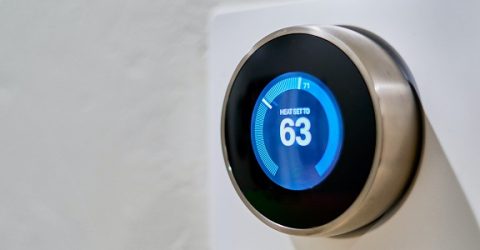The future of homes is automation
Future smart homes are likely to adopt ever-increasing amounts of automation to simplify our lives – when the technology works, at least

Predicting tomorrow’s technology today is a notoriously tricky artform, and it’s easy to mock predictions made decades ago.
Yet science fiction and technology programmes are often closer to the truth than we realise at the time, even if they get the details wrong.
Last year, the BBC released archive footage from thirty years ago, featuring Tomorrow’s World presenters predicting what future smart homes would look like.
Despite living in the age of the Sinclair Spectrum and Ceefax, they scored some notable bullseyes.
They anticipated wireless device charging, voice-controlled entertainment systems and motion-activated lights – all implausible at the time, yet mainstream today.
So what predictions can be made today about future smart homes, and how automated might they become?
Cloudy with a chance of mainframes
It’s hard to overstate how transformative the cloud might be in the development of future smart homes.
Today, we’re accustomed to asking Alexa to play Radio X, or to send a message to another Alexa device. Yet there’s no reason why this technology can’t extend much further.
Why turn on a tap, close a blind or switch on a cooker ring manually when voice control could achieve the same objective without physical controls being needed?
Indeed, why unlock a door with a key or place an online order with a credit card when biometric identification could do the job more seamlessly and securely?
There are already more Internet of Things devices on the planet than people, and these numbers will soar as consumer confidence grows and connectivity between devices spirals.
The IoT could eliminate most of a smart home’s sockets and switches, from thermostats and plugs to appliance knobs and remote controls.
Machina ex deus
Every suggestion in the previous section relies on human input. But what about jobs which could be completely automated without human overlords being involved – or even informed?
Imagine a table lamp which detects its filament is about to blow and places an online order for a replacement bulb, without you even realising.
Imagine an air purifier that receives live weather reports saying pollen levels are going to reach hayfever irritation levels later, coming on automatically to cleanse the air.
MoreHow vulnerable is your smart home tech to broadband outages?
From a consumer perspective, the ultimate goal of automation is simplification, and it doesn’t get much simpler than a version of Iron Man’s JARVIS powered by in-room microphones.
This machine learning algorithm could underpin everything from tailored date night soundtracks to optimal shower settings for each resident.
Instructions will be seamlessly distributed, shared and interpreted across wireless networks which are more likely to be powered by 5G than congested WiFi.
Within a decade or two, light fidelity might have replaced WiFi for secure domestic networks, since it’s effectively unhackable from outside if you close the curtains.
And speaking of safety, this will also be automated – doors locking on schedule or by voice command, motion-sensing cameras uploading live into police databases, and so forth.
LiFi is also far faster than WiFi, with negligible latency – the scourge of technologies like VR, which may finally come into its own when there’s no lag between action and reaction.
LiFi and 5G (or even 6G, which may be superfluous if 5G expands across enough of the GHz spectrum) could allow innumerable devices to communicate with each other in real time.
And if this doesn’t sound appealing, be warned – smart tech and IoT infrastructure is likely to be factored into new homes at the design stage within a few years.
It may become increasingly difficult to avoid this technology in a decade’s time.






